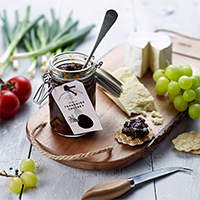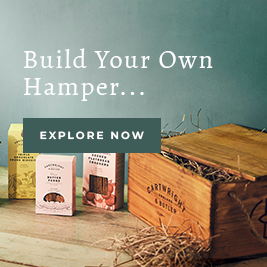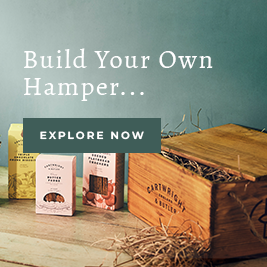Shortbread - A Short History
The history of shortbread usually starts with Mary Queen of Scots, and we promise we will get to her and the part she plays in its history but we need to go back a little further to the Medieval Times, for the beginning of our story.
Back them, old bits of left over bread dough were twice baked in a low oven to a rock hard rusk-style biscuit, and then in hope of making them edible, dusted with sugar and spices. Known as shortcakes these were regarded as a bit of a delicacy. Which probably says more about the quality of cooking around that time than anything else.
Over the years, people would experiment with these shortcakes, we’ve seen one recipe that swapped flour for oats and added “barm”, the yeasty foam scraped off fermenting liquor, which sounds, well, lets just say, interesting. Generally though the trend was away from yeast and towards adding butter, which, in our view, will always make anything taste better.
And it would have been these biscuits that found their way to the kitchens of Mary Queen of Scots.
Now, those of you who paid attention in their history classes at school will know, Mary spent her childhood in France, and didn’t make it to Scotland until she was 16, which was plenty of time for her to develop a Gallic love of butter.
And the story goes that it was her fancy French chefs who took it upon themselves to add butter, more butter and then, probably a little more butter to the basic recipe until we got something resembling the shortbread of today.
Now, Mary’s particular preference was for Petticoat Tails, a thin, crisp, buttery shortbread flavoured with caraway seeds.
‘Hey, hang on, why, were they called Petticoat Tails?’ You’re probably shouting at the screen right now. Well, seeing as you've asked. There are two theories.
It’s been suggested that it was a corruption of the French petites gatelles, meaning little cakes (If you say it out loud, preferably in a broad Scottish accent, you might hear how it could sound like petticoat tails.)
Alternatively the name may have come from the fact the triangles of shortbread, fitted together into a circle in much the same way as the pieces of fabric used to make a full petticoat during the reign of Elizabeth I. The theory being, the name came from ye olde English word for pattern, which was tally, and so the biscuits became known as petticoat tallis.
And there’s been no looking back for shortbread sine. And is now regarded as one of the finest of all biscuits, ever. We’re naturally proud of our shortbreads, which are the result of a lot of trial and error as we sort to make the very best versions we could. Try our shortbread biscuits for yourself!
But to finish, here are three little known facts to fascinate and impress your friends with.
There are only three acceptable shortbread shapes: one large circle divided into segments, the aforementioned Petticoat Tails; a thick rectangular slab cut into Fingers and our personal favourite, individual round biscuits, known as Shortbread Rounds.
Today, shortbread is technically not a biscuit but, as, the Scottish Association of Bakers successfully managed to persuade the Scottish government to call it “a speciality item of flour confectionery”, which comes with its own tax breaks.
And lastly, January the 6th is National Shortbread Day.








